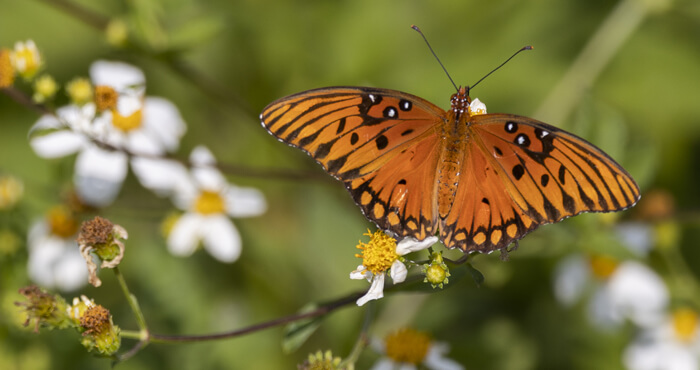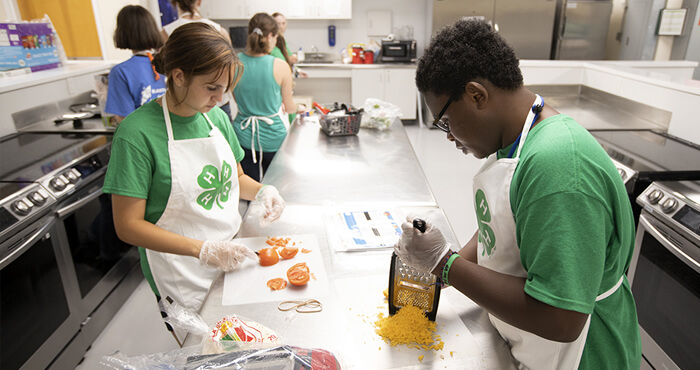
Stinkhorn
A Smelly but Beneficial Fungi
During cool weather in winter and early spring, some Florida homeowners begin to notice foul-smelling mushrooms popping up in their yard. Although their strong rotting smell is unappealing, these fungi – the stinkhorn – are not actually bad for your landscape and can be beneficial.
Identification
The stinkhorn is in the same order of fungi that includes puffballs and earthstars.
Stinkhorn fungi start out as white, egg-like structures in mulch or other damp, decomposing material. Most of this fungal structure is underground. When enough water is available, this egg-sac structure will rupture and the mature mushroom (the “stinkhorn”) will emerge.
Depending on the type of stinkhorn, this mushroom (the fruiting body of a fungus) is stalk-like, globular, or latticed. Stinkhorns vary in color but are usually pink to orange in Florida.
Odor
All stinkhorns produce foul odors, which some people describe as a putrid, rotting meat smell. The smell attracts ants and flies that then pick up and carry the mushroom spores to other places.
Stinkhorns Are Beneficial
As a fungus, the stinkhorn breaks down organic matter. This is especially helpful for landscapes and gardens in Florida’s naturally sandy and nutrient poor soils. In your garden, stinkhorns break down materials such as mulch and make those nutrients available for plants.
Stinkhorns do not harm landscape plants or grasses.
Management
Homeowners can take heart that stinkhorns are seasonal. Stinkhorn mushrooms usually appear for a few weeks only once or twice a year, and especially during wet, cool weather.
While the stinkhorn occurs naturally in Florida, it can also be introduced to an area through mulch materials.
You can use a few methods to deal with stinkhorns in your landscape:
- Remove decaying organic matter, especially sawdust piles, dead roots, underground stumps, and hardwood chip mulch.
- Consider using vegetative groundcovers as opposed to mulch, and/or keep large mulched areas away from your house.
- Handpick stinkhorns in the “egg” stage, put them in a zipper freezer bag, and throw them away.
- Tolerate them. Stinkhorns are beneficial for your soil. Try keeping your windows closed to minimize the odor problem.
Chemical Control
There are no registered or safe products for use on stinkhorn fungus, and using chemicals is not a recommended or practical control method.
Adapted and excerpted from:
L. Williams, “Stinkhorns are Smelly Fungi,” Gardening in the Panhandle (3.87MB pdf), UF/IFAS Northwest District Extension (01/2009).
T. Friday, “Mushrooms creating a stink” (173KB pdf), UF/IFAS Santa Rosa Extension (01/2006).
Resources
Other UF/IFAS Sites
- Gardening Solutions
- Entomology and Nematology Department
- Environmental Horticulture Department
- FAWN: Florida Automated Weather Network
- Florida-Friendly Landscaping™ Program
- Florida Master Gardener Program
- IPM Florida
- Pesticide Information Office
UF/IFAS Publications
- Florida-Friendly Landscaping™ Program
- Central Florida Gardening and Landscaping Fact Sheets
- Starting a Garden
State & Federal Agencies
- Florida Department of Agriculture and Consumer Services (FDACS)
- Florida Department of Environmental Protection (FDEP)
- Florida Energy Systems Consortium (FESC)
- U.S. Environmental Protection Agency (EPA)
- USDA Plant Hardiness Zone Map--U.S. National Arboretum
Organizations & Associations
- American Community Gardening Association
- American Horticultural Society
- Florida Native Plant Society
- Florida Nursery, Growers and Landscape Association (FNGLA)
- North American Native Plant Society
Other Sites & Publications
UF/IFAS Mobile Web Apps



.jpg)

.jpg)
